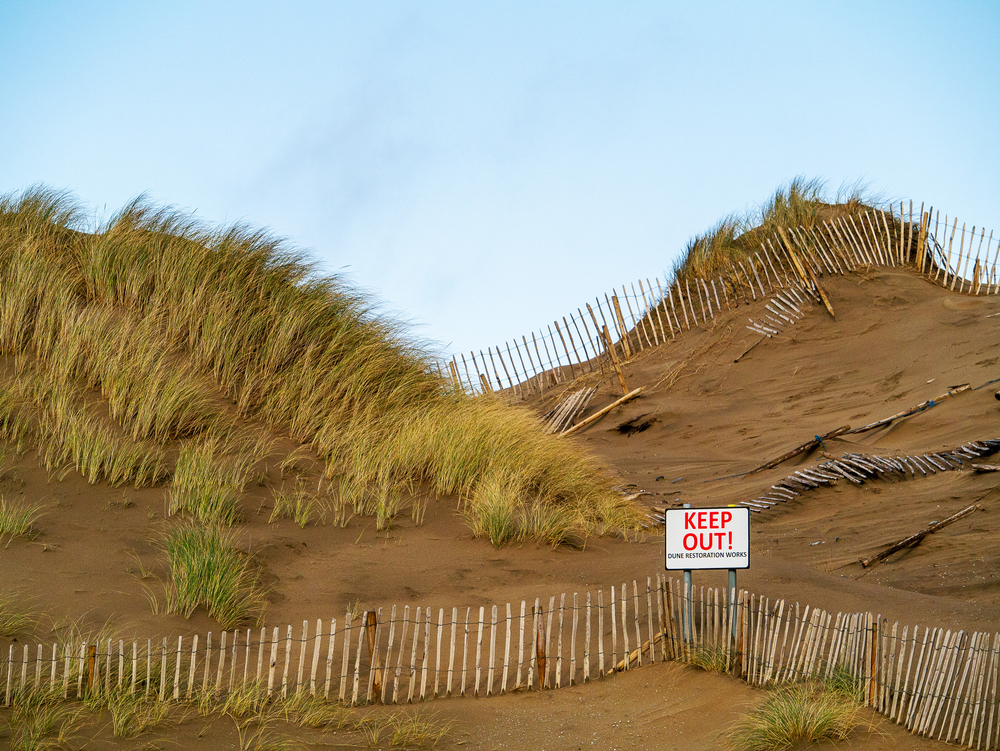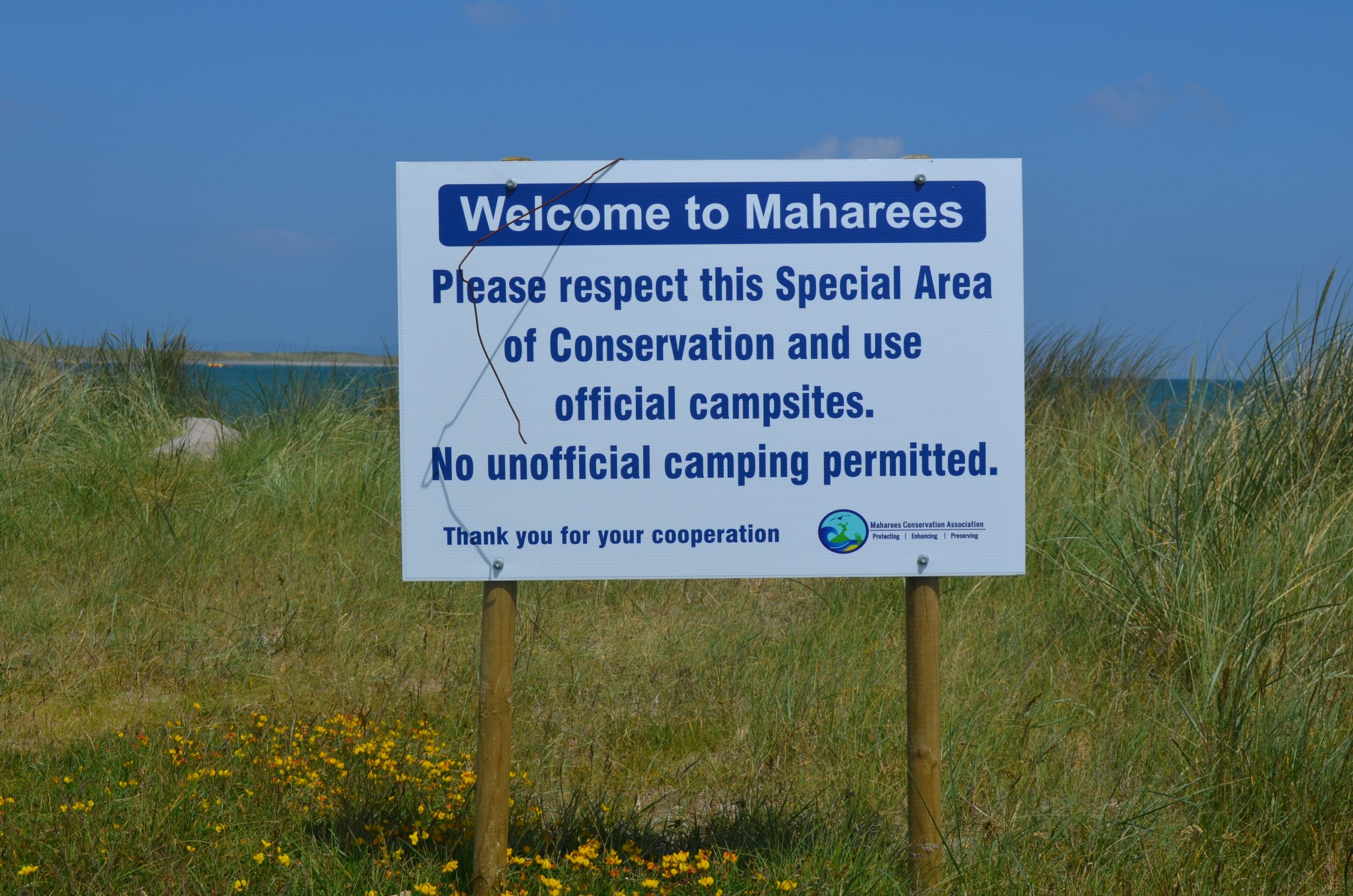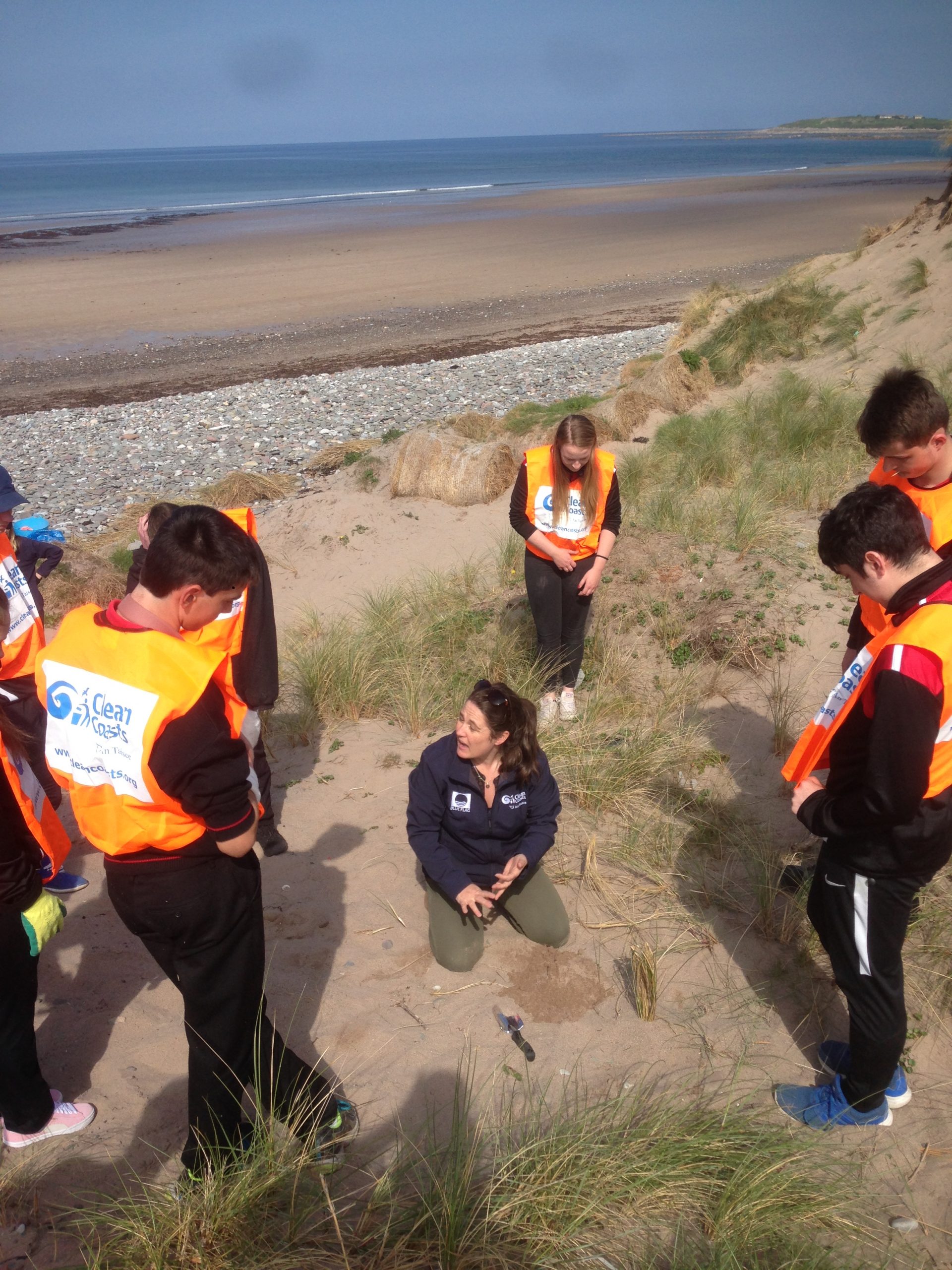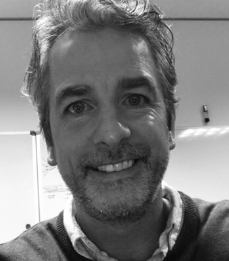
The effects of rising sea levels are evident and well documented. We can now see the extent of coastal erosion and flooding with interactive features like the Climate Central map, which visualises predictions for 2050 sea levels across the globe. Based on peer-reviewed research, the map shows large parts of Ireland’s coast completely submerged underwater in 30 years’ time for worst-case scenarios of sea level rise. Findings like these place increasing pressure on national and European policymakers to take active measures to preserve our coasts.
‘Coastal resilience’ is a recurrent term in climate policy; it describes the capacity for social-ecological systems to cope with rising sea levels, extreme weather events and commercial activities. Key to coastal resilience are nature-based solutions like beach, dune, oyster reef and kelp restoration. Research on native oyster reefs in Galway Bay tells us that native reef restoration can dampen the impact of storm surges, offering a benefit-cost ratio multiple times larger than the grey infrastructure alternative (revetment/seawall). This is just one of the many nature-based solutions that we can use to protect Ireland’s coasts. We are still decades away from realising the potential of nature-based solutions in Ireland – in both practice and planning. We now need to build the scientific foundations and call for a coherent national coastal plan to pursue these long-term sustainability goals.
An Island Nation
40% of Ireland’s population – 1.9 million people – reside within 5km of the coast. The estimated population increase of one million by 2040 will put even more pressure on our coastal and marine ecosystems, already in poor condition. To date, our economic model has conformed to maximum sustainable yield (the largest yield/catch that can be taken from a species’ stock over an indefinite period). As described by Prof Stephen Hynes, climate change has exposed the vulnerability of our socio-ecological systems, and we need to shift to nature-based management. For scientific researchers and EU policymakers, Nature-based Solutions (NbS) offer a major opportunity to achieve climate resilience targets in future urban and rural settings.
The restoration of beaches, dunes, wetlands and salt marshes for example, has been shown to reduce the impact of coastal hazards including sea level rise, storms, coastal erosion and landslides. These solutions are cost-effective while offering value to society and the environment at large. Although Nature-based Solutions (NbS) and Ecosystem Goods and Services (EGS) are newcomers to the lexicon of coastal and ocean management, they are not simply green jargon. As a rule, NbS’s must benefit biodiversity and support the delivery of a range of ecosystem services. With this rule in place, solutions progress beyond mere ideas to operationalised plans and policies.
Sand Dunes – They Protect Us, Let’s Protect Them
Estimates show that 20% (1,500 km) of the Irish coast is ‘at risk’ from coastal erosion, with 6% (490 km) in ‘immediate danger’ (DELG, 2001). Coastal protection on soft coasts in Ireland has relied on traditional ‘hard’ engineering solutions (sea walls, rock armour, groynes). These artificial defences are appropriate to protect critical infrastructure, but unforeseen impacts can arise. Natural habitats and biodiversity are lost and natural processes are altered in changing geomorphology and hydrodynamics. In contrast to hard engineering structures, innovative nature-based solutions emphasise soft measures and long-term sustainable coastal restoration.
A recent Europe-wide research report estimated that the protection of European coastal areas (e.g., beaches, dunes, wetlands) could lead to a saving of about €50 billion annually, thanks to the reduction in associated disaster damage. The benefits of this kind of ‘blue-green infrastructure’ restoration span biodiversity, carbon sequestration, pollution reduction, health and tourism. From my visits to coastal communities all around Ireland, I have learned the uncomfortable truth that hard engineering solutions are not a viable option to protect all areas against coastal erosion and flooding.
I am also very concerned that the lack of a coherent national coastal policy or plan has meant that coastal management and conservation measures such as NbS are dependent upon the motivation of local voluntary or statutory environmental groups. Coastal communities are currently providing all the labour in designing, constructing and maintaining NbS – often delivered at their own cost by the community. This current working model is neither sustainable nor fair. We are decades behind coastal planning compared with Australia, France, Netherlands, Portugal, Spain, the UK and United States.
I strongly believe that the responsibility of managing NbS in Ireland must be devolved from communities to local authorities. This would remove conflicts in determining who pays for, operates and maintains an NbS in the long-term. This can only be achieved if NbS are mainstreamed in local authorities or in partnership with the Department of Housing, Local Government and Heritage, NPWS, Marine Institute and OPW. Findings from the BCOMAR (Building Coastal and Marine Resilience in Ireland) research report led by NUI Galway and MaREI highlights the institutional and technical catalysts and barriers to these community-led climate actions. This research is based on extensive consultation with coastal communities.
From my experience working with the Maharees Conservation Association CLG, Co. Kerry I have seen first-hand how the outcomes of dune-based NbS projects can be very impactful. Their NbS work has fostered community engagement; NbS are an attainable goal for the community group; NbS leave a visible impact that can be seen by the entire community; NbS build partnerships between communities and local government; and NbS in Maharees have successfully restored parts of the dune and reduced climate risks.

Their experiences are now informing other communities and government bodies on the design and implementation of NbS. This summer, they are offering a free three-session course on ‘Sand Dune Ecology and Conservation’ with the Kerry Education and Training Board. This education hub can be rolled out nationally and is already piloted as an outdoor classroom as part of the environmental curriculum at local schools. In June 2021, the CARO-ASBN launched the ‘Sand Dunes – They Protect Us, Let’s Protect Them’ campaign, producing a series of educational videos and boards for coastal communities to display on their dunes. The boards were inspired and guided by the experience of the Maharees community group and researchers in Geography, NUI Galway who brought their scientific expertise to the project.

Kelp Forests – Oceans of Opportunity
Though relatively unexplored in Ireland, NbS’s hold a lot of promise for our island nation. Ocean NbS’s use kelp forests, seagrass meadows, oyster reefs and mussel beds to dampen waves. Ecosystem engineers reduce current velocities and dampen waves with species such as eelgrass, mussel and oyster beds, corals and mangroves. Off the coast of Ireland, kelp forests develop in a similar ecospace. There are currently too many critical knowledge gaps (financial and scientific) to predict precisely if, or how, large kelp forests in Irish waters can provide a feasible nature-based solution for coastal protection.
With support from Marine Institute, I am co-leading a multidisciplinary research team in NUI Galway based in Geography, Civil Engineering and Earth & Ocean Sciences conducting a four-year study to measure the ecological and socioeconomic impacts of NbS, investigating what blocks or supports their implementation. This cutting-edge research will provide the very first scientific evidence of the potential of kelp forests to mitigate storm impacts in Ireland.
I have little doubt that regenerative ocean farming or vertical farming, has much more benefits than traditional methods of coastal protection. Large-scale restoration projects can capture blue carbon and nitrogen, support commercial farming, and grow seaweed and shellfish used for food, fertilizer and more. This is well documented in an extensive report, co-authored by Dr Dagmar Stengel in NUI Galway. (1) There are international ‘best practice’ guides of the benefits of vertical farming in our ocean. The concept is in its infancy in Ireland but happening in Ventry, Kerry; Castletownbere, Cork and Galway Bay. The environmental benefits of farming seaweed and shellfish have long been clear. According to The Nature Conservancy, no fresh water, land or feed are required and new habitats are created for other species. Exploring ocean NbS could be important to cement Irelands place in contributing to global food supply and establish that it is possible to produce nutritious food and actively contribute to the recovery and restoration of our ocean ecosystems at the same time.
NbS Policy vs Practice
Ireland’s coastal habitats are suffering ongoing decline despite significant investment to reverse this trend. A recent report on the Aichi Biodiversity Targets “Ireland’s 6th National Report to the Convention on Biological Diversity” (DCHG, 2019) states that the majority (85%) of Ireland’s listed habitats are in unfavourable or bad conservation status. The National Parks and Wildlife Service (NPWS) has abjectly failed to protect Ireland’s natural capital for decades and the biodiversity crisis is at a tipping point. An independent review of NPWS with 3000 submissions (Stout & Ó Cinnéide, 2021) found that ‘major strategic, structural, capacity and resource issues’ prevent the NPWS from meeting obligations, let alone ‘respond to future challenges and legislation, including the Climate Action Bill and EU Biodiversity Strategy to 2030.’
It is important to note that operationalizing effective national plans and mechanisms to implement NbS will help us meet our global/EU biodiversity targets. In essence, coastal management using NbS and conservation are not mutually exclusive for Ireland. They are clearly intertwined as seen in the proportion of dune and coastal habitats lying within designated Natura 2000 sites. Effective coastal management using NbS will reduce the chronic degradation and loss of these coastal ecosystems and improve our consistent poor performance in reviews. Protection, enhancement and restoration plans of coastal ecosystems need to be supported within local governments and need to be fair so that they equally consider social, economic and environmental factors – especially within the marginalized coastal communities that host these protected ecosystems.
Researchers in Geography at NUI Galway have built huge credibility with State, public bodies and coastal communities with community-based research and research on coastal NbS. During 2021, their work was recognized by the Climate Action Regional Offices (CARO) in Ireland and the Chartered Institute of Ecology and Environmental Management (CIEEM), the leading professional body for ecologists and environmental managers in the UK, Ireland and abroad, as an exemplar of how NbS can work in partnership with academics and communities. It is critically important that third level institutes like NUI Galway continue to support and value our researchers who are prepared to engage in these difficult-but-vital dialogues that arise in public discussion through sustained and effective community engagement outside of the confines of the university and make research accessible in forums beyond paywalled journals.
With climate pressures increasing and property development continuing as usual along the coast, the price of poor ocean management creeps higher. Nature-based solutions (NbS) have the potential to build climate resilience and tackle key societal challenges in Ireland.
We now need to build clarity between responsibilities across different levels of coastal governance, and consider the value of grey vs blue-green (NbS) coastal defences. To realise the poential of NbS, we need funding and opportunities to harness the willingness of our coastal communities to engage, share their learnings, and take action locally. Restored coastal ecosystems bring health, social and economic benefits to coastal communities while also mitigating the impacts of climate risks. It is in all of our best interests to build climate resilience in Ireland.
(1) See ‘Blue Carbon and Marine Sequestration in Irish Waters and Coastal Habitats’.
Acknowledgements
The author would like to acknowledge funding from the Marine Institute (‘Increasing coastal resilience using terrestrial- and ocean-based Nature-based Solutions’, 2022-2026) in collaboration with Dr Stephen Nash (Civil Engineering) and Ms Sheena Fennell (Earth & Ocean Sciences).
The author would like to acknowledge previous and ongoing funding from EPA, Marine Institute, Geological Survey Ireland, OPW, Climate Action Regional Office and Kerry County Council.
The author would like to acknowledge his colleagues in NUI Galway who have contributed to his research programmes in various capacities, especially Dr. Kevin Lynch (Geography) for insightful discussions on coastal NbS and fostering a very successful partnership with CARO.
The author would like to acknowledge the tremendous work of the Maharees Conservation Association in Co. Kerry. This community is providing roadmaps for researchers, local authorities, research agencies and communities to implement community-led actions.
The author would like to acknowledge funding from the EPA and Marine Institute (‘Building coastal and marine resilience in Ireland’, 2019-2021) in collaboration with MaREI (Dr Martin LeTissier; Dr Ann Marie O’Hagan; Dr Glen Smith).
Profiles

Dr. Eugene J. Farrell is a Lecturer in the Discipline of Geography in the College of Arts, Social Sciences, & Celtic Studies in National University Ireland Galway. He co-led the development and was Director (2014-2021) of the taught MSc programme ‘Coastal and Marine Environments: physical processes, policy’. He was a founding member and President (2015-2020) of the Geomorphology Association of Ireland.
He has 25 funded projects (> € 7M) and is recognised as one of the leading academics in Ireland on issues related to coastal management, community engagement and climate change impacts. Dr. Farrell has successfully applied his research to influence change well beyond the academic sphere through his sustained work with coastal communities, research agencies and State and public bodies. In 2018 he was the recipient of the individual President’s Societal Impact Award for this work. In 2020 he was invited by the Royal Irish Academy Geosciences and Geographical Sciences Committee to co-lead a working group tasked with maintaining the position of Geography across the Irish education system. He was a contributing author to The Coastal Atlas of Ireland which was awarded Best Irish Published Book of the Year 2021.
Dr. Farrell was recently elected as Ireland’s nominee for the Working Group on ‘Coastal Resilience’ at the leading European think tank, European Marine Board (EMB). The research conducted by the group will inform EU policy and promote science-based decision making in coastal conservation, restoration, habitat and biodiversity management.